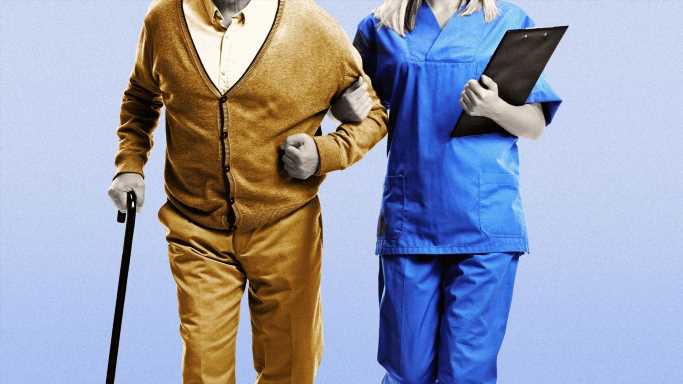
Illustration: Gabriella Turrisi/Axios
Increased immigration could help solve nursing homes' persistent workforce shortages and improve the quality of care in communal health settings, a new National Bureau of Economic Research paper found.
Why it matters: Nursing homes have been hit the hardest by staffing shortages post-pandemic, and the Biden administration could issue a rule on minimum staffing requirements as soon as this spring to address quality issues.
Yes, but: The percentage of Americans wanting less immigration has surged since President Biden took office, and a divided Congress isn't likely to liberalize policies.
By the numbers: 87% of nursing homes have moderate to high staffing shortages, according to a 2022 survey from the American Health Care Association, which represents the industry.
- Immigrants make up about 19% of workers in nursing homes, per the NBER paper.
- Every 10% increase in female immigration would yield 0.7% more nurse assistant hours per nursing home resident and 1.1% more registered nurse hours, researchers projected.
- Short-term hospitalizations of nursing home residents would also decline 0.6%.
The details: Immigrant health care workers can work in the U.S. with temporary work (H1-B) visas or employment-based visas (EB-3).
- Both require the employer to petition U.S. Citizenship and Immigration Services before a person applies.
- H1-B visa workers who were working the "Medicine and Health" field only made up 3.5% of the total number of recipients in 2021, but there have been recent increases.
- In fiscal 2022, the State Department issued 145% more employment-based immigrant visas for health care workers compared to fiscal-year 2019, per a department spokesperson.
Source: Read Full Article
